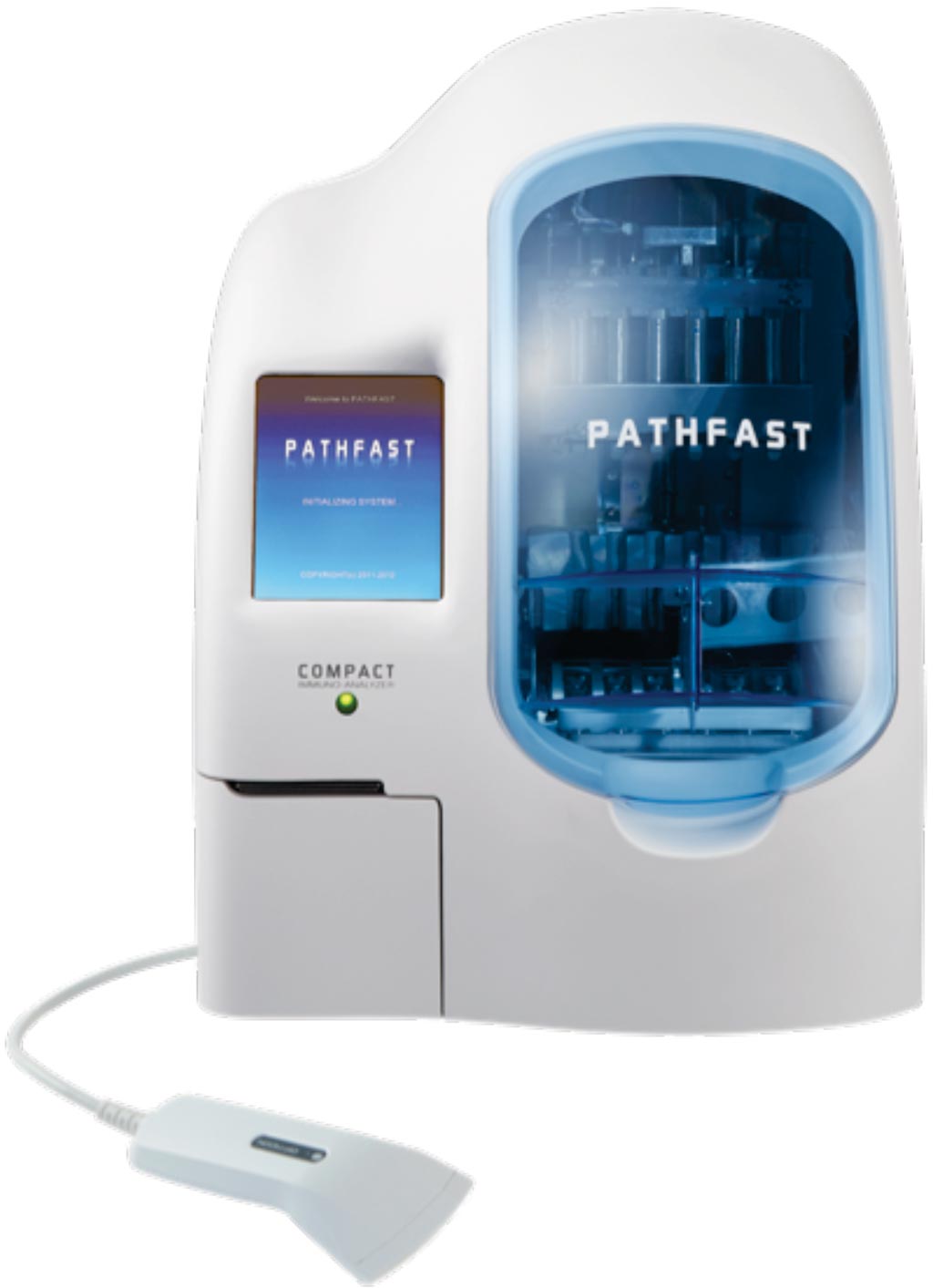Troponin Assays Evaluated for Acute MI
By LabMedica International staff writers
Posted on 06 Jun 2018
In hospital laboratories and in point-of-care testing, cardiac troponin measurements are achieved by various assays, including “contemporary,” “sensitive” and “highly-sensitive” assays.Posted on 06 Jun 2018
Due to the absence of standardization, troponin results cannot be transferred from one assay to another, and individual cut-offs must be strictly used in the context of the troponin assay for which they were determined.

Image: The PATHFAST compact immunoanalyzer used for measuring cardiac troponin (Photo courtesy of Mitsubishi Chemical Europe).
Scientists from several intuitions collaborated with Cochin Hospital (Paris, France) and compared the use of nine different cardiac troponin (cTn) assays (two cTnT and seven cTnI) for the diagnosis of non-ST elevation acute myocardial infarction (NSTEMI) in a single multi-center population. The study was conducted in 13 French hospitals: nine centers were involved in patient inclusion and sample collection, with four additional centers involved in the measurement of troponin only and was performed between April 2014 and November 2015. The study included 158 patients (mean age 60 ±17 years), including 23 patients (14%) with NSTEMI.
The teams found that the analytical comparison highlighted a large heterogeneity of cTn assays, as reflected by percentages of patients with detectable cTn, correlation coefficients, Passing-Bablok comparisons and concordance coefficients. Correlations within cTnI assays were good and correlation within cTnT assays was excellent. Diagnostic performances demonstrated that each cTn assay has specific threshold values. Furthermore, some assays HS-cTnI and T, cTnI-Pathfast and cTnI-Centaur indicated high sensitivity and negative predictive value using the limit of detection (LoD) diagnostic strategy.
The authors concluded that all nine cTn assays indicated overall good diagnostic performances for the diagnosis of NSTEMI in emergency departments when the recommended algorithm based on the variation of cTn value between two measurements at admission and three hours later was used. The study was published in the July 2018 issue of the journal Practical Laboratory Medicine.
Related Links:
Cochin Hospital














